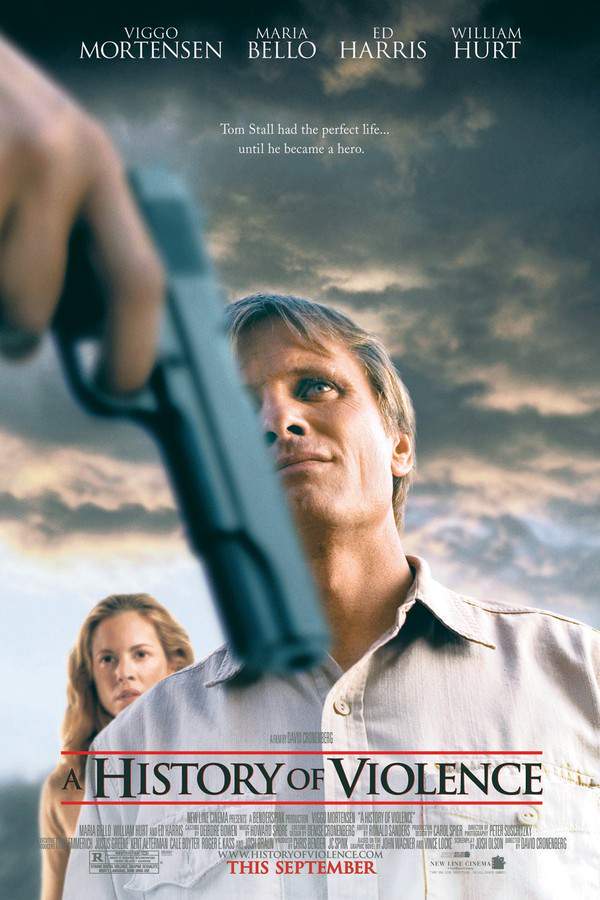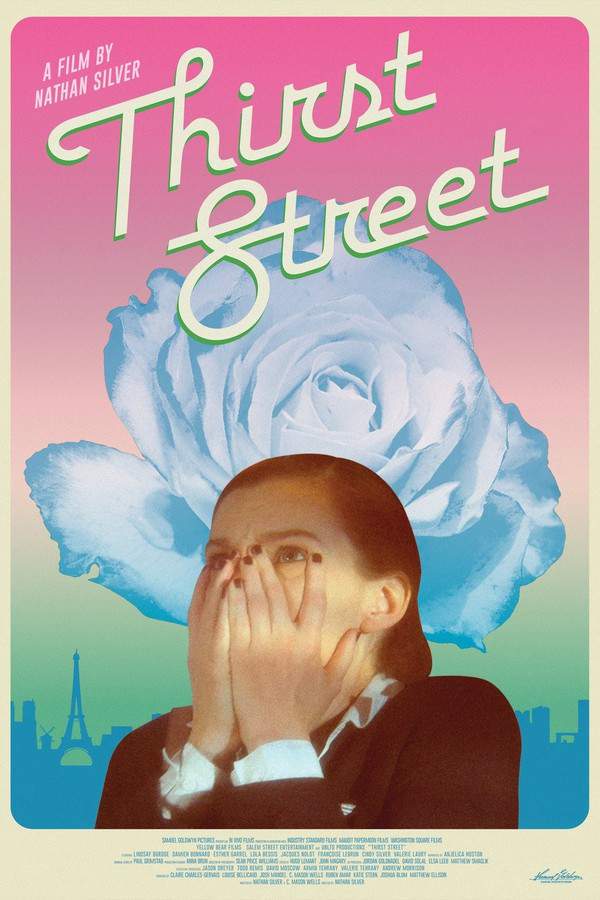
Test your knowledge of Hunger with our quiz!
Hunger Plot Summary
Read the complete plot summary and ending explained for Hunger (2008). From turning points to emotional moments, uncover what really happened and why it matters.
The film opens with prison guard Raymond Lohan getting ready for his workday; he methodically checks under his car for any bombs, dons his uniform in the locker room, and chooses to ignore the socializing of his coworkers. Meanwhile, a new IRA prisoner, Davey, arrives at the prison. His adamant refusal to wear the prison-issued uniform leads to him being labeled as “non-cooperative.” Consequently, he is sent to his cell with nothing but a blanket to keep warm, where he meets his new roommate, Gerry, who has transformed their cell into a grotesque display, smearing it with feces from floor to ceiling. The audience witnesses the defiance that both men embody against the unforgiving prison regime as they start to bond in their bleak surroundings.
On visiting day, Gerry’s girlfriend pulls off a daring act by smuggling in a small radio, discreetly esconding it within her body. The narrative takes a darker turn when the prison officers, in an alarming show of force, brutally remove the inmates from their cells, mercilessly beating them before restraining them to shave off their long hair and beards—symbols of their protest. During this chaotic moment, Bobby Sands, another prominent inmate, defiantly spits in Lohan’s face. In retaliation, Lohan punches Sands, only to miss and strike the wall, injuring his hand in the process. He proceeds to drag Sands away after the humiliating shaving, washing his bloodied hands afterward, echoing the violent atmosphere from the film’s beginning.
As the men are forced into second-hand civilian clothing, the laughter of guards echoes in the background at the sight. In a fit of outrage, Sands tears apart his clothes, prompting others to follow suit in a collective act of rebellion. Tension escalates further with the arrival of riot police; a fearful display unfolds as the officers line up, beating their batons against shields while screaming threats to the prisoners being yanked from their cells. The brutality intensifies as inmates are subjected to an alarming routine of searches that involve invasive probing, while the violence continues unabated on both sides of the prison.
In a poignant contrast, Lohan visits his elderly mother in a nursing home. Tragedy strikes when he is shot in the back of the head by an unidentified IRA assassin, collapsing onto his mother’s lap in a heartbreaking moment. The narrative then shifts to focus primarily on Sands, a man fiercely dedicated to his cause, convinced of the nobility in suffering for political recognition as a prisoner. One standout scene occurs as Sands engages in a moral debate about the hunger strike with Father Dominic Moran. In an emotional exchange, Sands recounts a moment from his past in Donegal, where he made a painful decision to drown an injured foal, believing it to be an act of mercy despite the consequences. He parallels this experience to his impending hunger strike, fully aware of the physical toll it would take on him.
As the film progresses, viewers see Sands nearing the end of his endurance, weakened by his months-long hunger strike, displaying severe physical deterioration: sores, kidney failure, low blood pressure, and debilitating stomach ulcers have ravaged his body. One of his final encounters features a new guard who replaces Lohan, casually showing Sands his tattooed knuckles that read “UDA.” With what little strength remains, Sands struggles to rise and defiantly stare at the guard, refusing assistance. Yet, this small act exhausts his frail body, leading to his collapse. In his last moments, Sands is surrounded by his parents as he passes away, 66 days into the hunger strike, with his mother holding his hand in a heart-wrenching farewell.
Hunger Timeline
Follow the complete movie timeline of Hunger (2008) with every major event in chronological order. Great for understanding complex plots and story progression.
Raymond Lohan's Daily Routine
The film begins with prison guard Raymond Lohan preparing for his workday, reflecting a sense of dread in his meticulous actions. He checks under his car for bombs and dons his uniform, symbolizing the tension of his environment as he chooses to remain disconnected from his coworkers.
Davey Arrives
A new IRA prisoner named Davey arrives at the prison and immediately refuses to wear the issued uniform, marking him as 'non-cooperative.' His defiance sets the stage for his tough journey as he is sent to his cell with only a blanket for comfort.
Gerry's Grueling Cell Transformation
Upon entering the cell, Davey meets Gerry, who has transformed their shared living space into a grotesque display by covering the walls with feces. This act of rebellion highlights their shared defiance against the harsh prison environment.
Visiting Day Disguise
On visiting day, Gerry's girlfriend audaciously smuggles a small radio into the prison, concealing it within her body. This act of subversion provides a brief escape from the grim reality for the inmates, symbolizing hope amidst despair.
Violent Removal of Inmates
Chaos ensues as prison officers violently remove inmates from their cells, brutally beating them in the process. This moment of sheer brutality culminates when Bobby Sands defiantly spits in Lohan's face, provoking an intense hand injury as Lohan retaliates.
Ripping Through the Clothes
Following the violent treatment, Sands and his fellow inmates are forced into second-hand civilian clothing, which sparks outrage. Sands tears apart his clothes, igniting a chain reaction among the other prisoners as they collectively rebel against their humiliation.
Confrontation with Riot Police
Tensions escalate further with the arrival of riot police, who rudely beat their batons against shields while threatening the prisoners. This intimidating display reinforces the power imbalance and danger that the inmates face from authorities.
Lohan's Visit to His Mother
In a contrasting moment, Raymond Lohan visits his elderly mother at a nursing home, showcasing both his vulnerability and the weight of his job. Tragically, this moment is cut short when he is shot in the back of the head by a mysterious IRA assassin.
Sands's Dedication to Politics
Following Lohan's tragic death, the focus shifts primarily to Bobby Sands, who is deeply committed to his political cause. Sands firmly believes in the nobility of suffering for political recognition, setting the stage for his forthcoming hunger strike.
Moral Debate with Father Dominic Moran
Sands engages in an emotionally charged debate with Father Dominic Moran over the implications of his hunger strike. Reflecting on a past decision where he chose to end the life of an injured foal, Sands draws a parallel to his own situation, revealing the depths of his conviction.
Physical Deterioration of Sands
As the days progress, Bobby Sands’ condition deteriorates dramatically due to the hunger strike. Months of refusal to eat manifest through severe physical ailments including sores, kidney failure, and debilitating stomach ulcers, showcasing the toll of his protest.
Confrontation with the New Guard
Amidst his suffering, Sands confronts a new guard who exhibits his tattooed knuckles reading 'UDA'. Despite his weakened state, Sands musters the strength to stand and defiantly face the guard, emphasizing his unwavering spirit in the face of oppression.
Sands' Final Moments
In the final throes of his hunger strike, Bobby Sands is surrounded by his parents as he loses consciousness. On the 66th day of his protest, he passes away, leaving behind a powerful legacy of sacrificial resistance against the injustices faced by prisoners.
Hunger Characters
Explore all characters from Hunger (2008). Get detailed profiles with their roles, arcs, and key relationships explained.
Raymond Lohan
Raymond Lohan is a prison guard who embodies the cold reality of the prison system. His meticulous routines and violent encounters with inmates highlight the brutal power dynamics at play. Lohan's character also experiences personal tragedy, providing a glimpse into the emotional toll of his profession.
Bobby Sands
Bobby Sands is a dedicated IRA prisoner whose conviction in his beliefs drives him to undertake a hunger strike. His character evolves from a defiant inmate to a tragic figure weakened by his commitment to his cause. Sands represents the human cost of political struggle, facing extreme suffering with unwavering resolve.
Gerry
Gerry serves as Sands' cellmate and demonstrates the bond formed through shared suffering. His initial defiance against the prison's dehumanizing conditions emphasizes the resilience of the human spirit in the face of adversity. Gerry’s character illustrates the complexity of prison life and personal sacrifice.
Father Dominic Moran
Father Dominic Moran plays a crucial role in providing moral support to Sands, engaging him in deep conversations about sacrifice and suffering. As a spiritual figure, he highlights the emotional and ethical dilemmas faced by the prisoners. His character underscores the importance of empathy amidst turmoil.
Hunger Settings
Learn where and when Hunger (2008) takes place. Explore the film’s settings, era, and how they shape the narrative.
Time period
The film unfolds in a contemporary context, reflecting the intense socio-political climate of the time. It showcases the struggles of IRA prisoners and the brutal realities of their treatment, capturing a pivotal period in Northern Ireland's history that is marked by conflict and demands for political recognition.
Location
Prison, Nursing Home, Donegal
The setting predominantly revolves around a stark prison environment, known for its harsh conditions and oppressive atmosphere. The nursing home serves as a poignant contrast, representing vulnerability and emotional connections, particularly in the relationship between Lohan and his mother. Donegal is evoked as a place of personal history for Sands, symbolizing past choices that haunt him.
Hunger Themes
Discover the main themes in Hunger (2008). Analyze the deeper meanings, emotional layers, and social commentary behind the film.
✊
Defiance
Defiance pervades the narrative as characters persist against an oppressive prison regime. Sands and his fellow inmates exhibit remarkable resistance through hunger strikes and rebellion against dehumanizing treatment. This theme reflects broader struggles for political rights and recognition.
💔
Sacrifice
Sacrifice is central to Sands' journey, as he is willing to endure immense physical suffering for the sake of his beliefs and the cause he represents. His choice to engage in a hunger strike symbolizes the ultimate sacrifice for political recognition and personal integrity.
⚔️
Conflict
The theme of conflict is vividly illustrated through the interactions between the inmates and the guards. Brutal confrontations highlight the tensions within the prison, reflecting the larger societal battles occurring outside its walls in Northern Ireland during this tumultuous time.

Coming soon on iOS and Android
The Plot Explained Mobile App
From blockbusters to hidden gems — dive into movie stories anytime, anywhere. Save your favorites, discover plots faster, and never miss a twist again.
Sign up to be the first to know when we launch. Your email stays private — always.
Hunger Spoiler-Free Summary
Discover the spoiler-free summary of Hunger (2008). Get a concise overview without any spoilers.
In the heart of Bangkok, the city’s streets pulse with steam, sizzle, and the constant clatter of wok‑laden stalls. Amid the neon glow and fragrant markets, a modest family noodle shop has been a quiet anchor for generations, its wooden counters and handwritten menus whispering stories of perseverance and community. The setting is both intimate and bustling, a place where the simple comfort of broth meets the relentless energy of a metropolis that never truly sleeps.
The young woman who has grown up watching her parents knead dough and perfect broth now finds herself at a crossroads. When Chef Paul, a celebrated figure in the city’s high‑end culinary scene, extends an invitation to join his coveted “Hunger” team, the promise of avant‑garde technique, precise plating, and the electrifying pressure of a Michelin‑star kitchen beckons. Chef Paul embodies the sleek, ambitious world of haute cuisine, where every dish is a performance and every service a test of endurance. The allure of this new realm clashes with the deep‑rooted loyalty she feels toward her family’s legacy, creating a compelling tension between reverence for tradition and the desire to forge her own identity.
The film’s tone balances the warmth of familial bonds with the sharp, almost clinical intensity of a top‑tier restaurant. Lush, sensory visuals draw the audience into the fragrant steam of broth and the cold precision of a stainless‑steel kitchen, while a subtle, persistent soundtrack mirrors the internal rhythm of hope and doubt. As she walks the tightrope between two worlds, the audience is invited to wonder whether the heat of ambition will strengthen the flavor of heritage or whether the pull of her roots will reshape the future of her culinary dreams.
Can’t find your movie? Request a summary here.
Movies with Similar Twists and Themes
Uncover films that echo the narrative beats, emotional arcs, or dramatic twists of the one you're exploring. These recommendations are handpicked based on story depth, thematic resonance, and spoiler-worthy moments — perfect for fans who crave more of the same intrigue.
Featured on this page

What's After the Movie?
Not sure whether to stay after the credits? Find out!
Explore Our Movie Platform
New Movie Releases (2025)
Famous Movie Actors
Top Film Production Studios
Movie Plot Summaries & Endings
Major Movie Awards & Winners
Best Concert Films & Music Documentaries
Movie Collections and Curated Lists
© 2025 What's After the Movie. All rights reserved.











